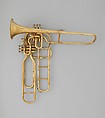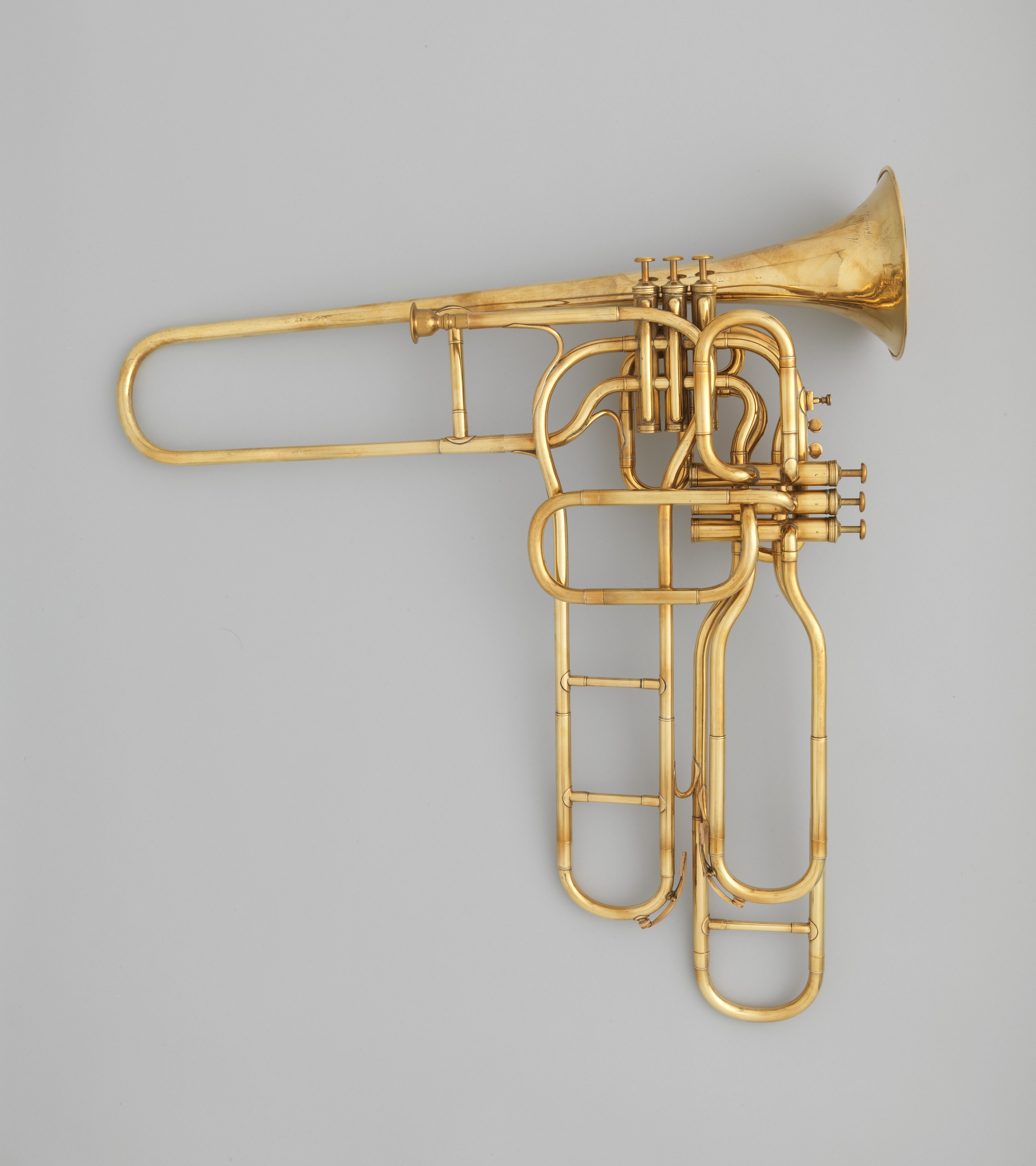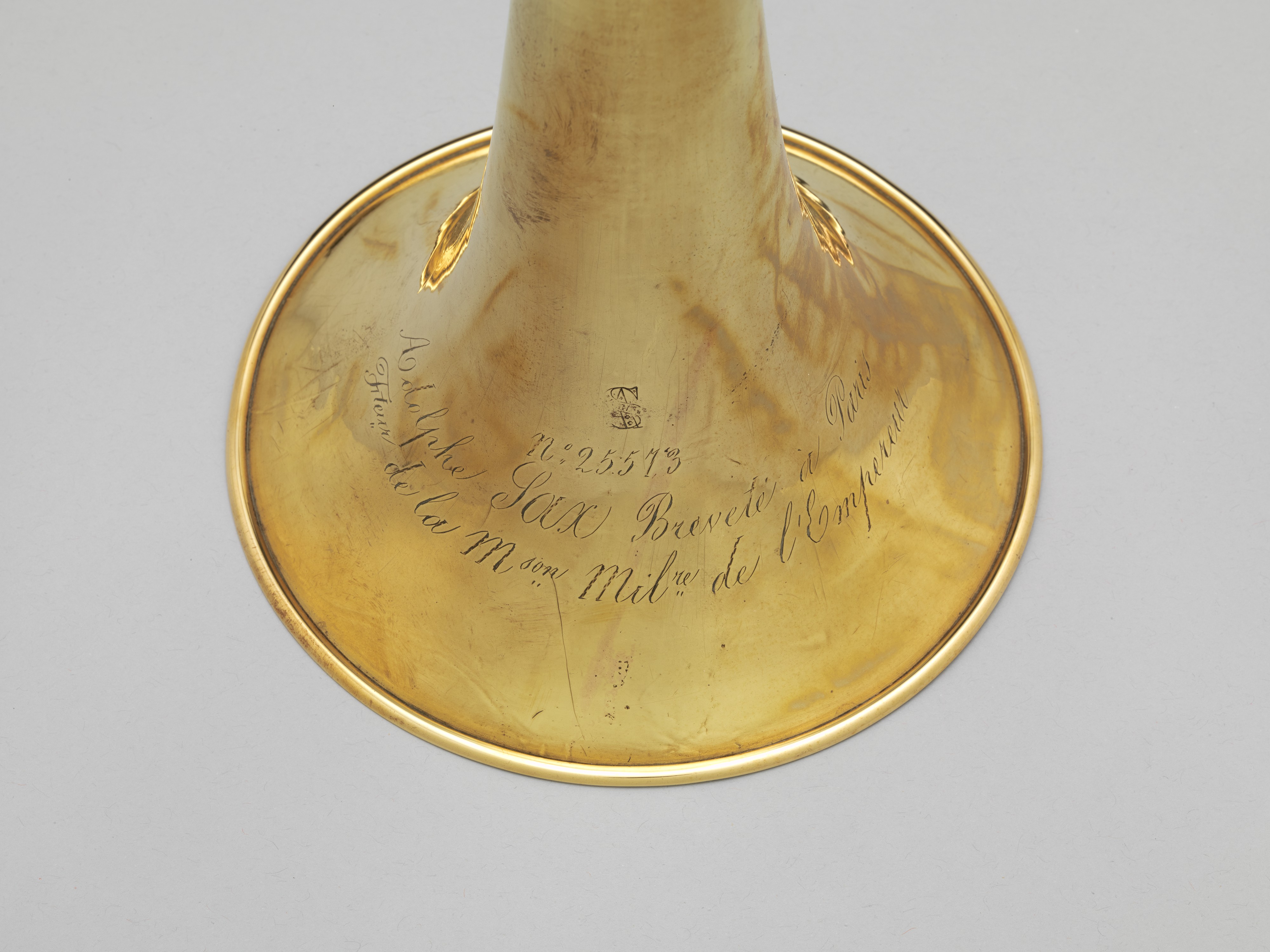Tenor valve trombone
Adolphe (Antoine Joseph) Sax Belgian, active France
Sax’s system of six independent valves was devised to correct the intonation problems of typical three-valve instruments, which can sound out of tune when valves are used in combination. Valve trombones were useful in situations where using a slide was awkward, such as while marching or playing in a cramped orchestra pit.
The valve system used on this instrument is detailed in Sax’s 1859 patent (France, No. 39371). It is an ascending system, since the valves do not add extra tubing to the instrument’s length. Instead each of them isolates different amounts of the instrument’s total tubing. Each valve is to be used on its own and causes the instrument to sound a half-tone lower than the previous valve. Sax applied his six-valve independent system mostly to saxhorns and trombones.
Also detailed in the 1859 patent is the valve venting system seen on this trombone. Instead of having a vent hole in the bottom of each valve cap as is usual, the casing of each valve has an external tube for venting. This was designed to make the instrument more durable. It permits air to escape when the valve is depressed (like a typical perforated valve cap) but prevents dust from entering the casing.
Despite these innovations and the quality of their construction, Sax's six-valve instruments did not achieve lasting popularity. Players were reluctant to learn such a radically different fingering system and the instruments were much heavier to hold than conventional three-valve models.
Due to rights restrictions, this image cannot be enlarged, viewed at full screen, or downloaded.
This artwork is meant to be viewed from right to left. Scroll left to view more.





